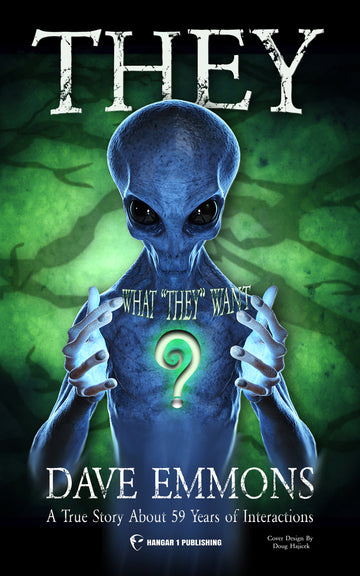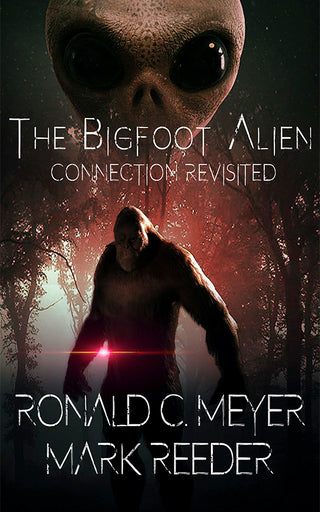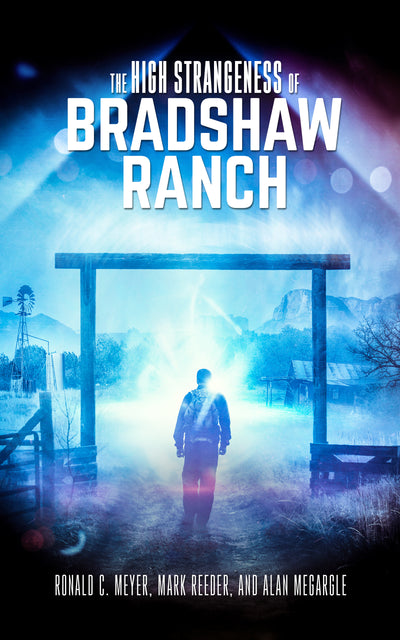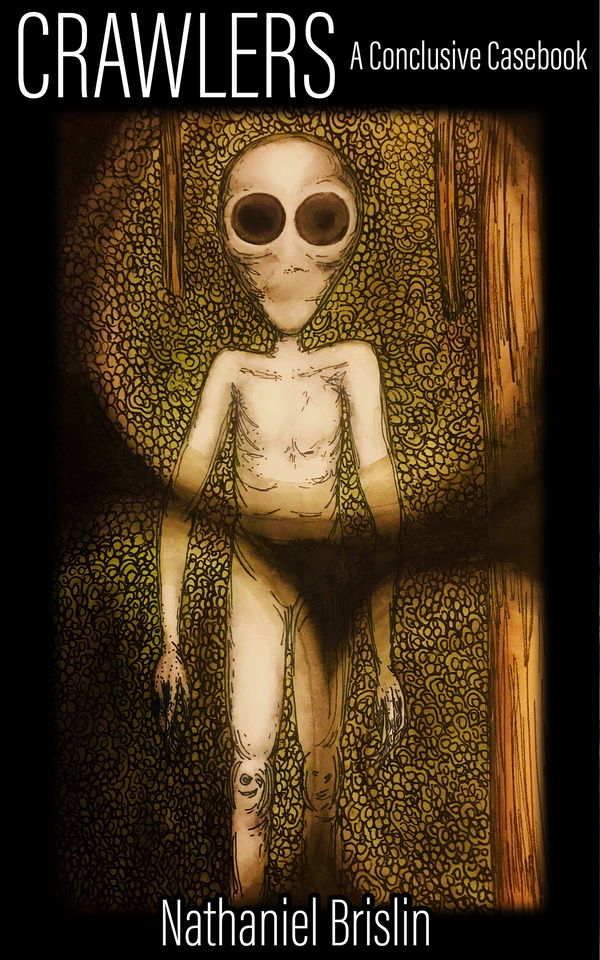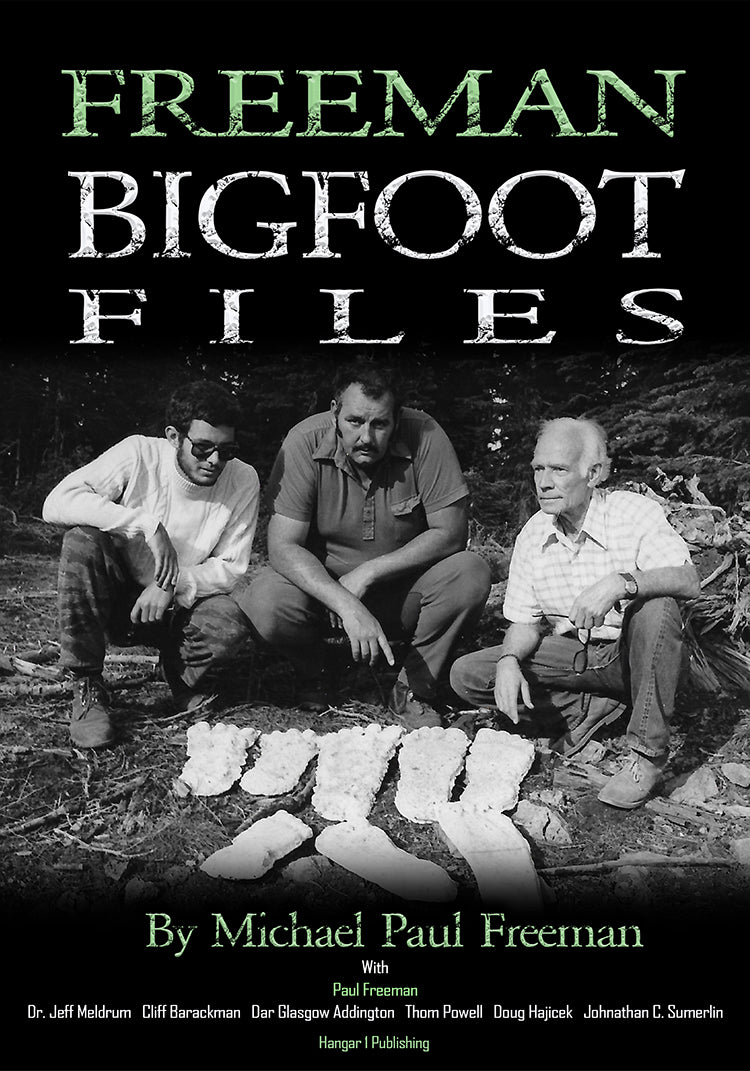Psychotronic Warfare: Separating Cold War Myths From Modern UAP Biological Effects

By Vanessa Torres, Ufologist
I've spent two decades investigating UAP cases, and one question keeps coming up in witness interviews: "Could this have been some kind of weapon?" When people describe strange sensations during close encounters - the buzzing in their heads, the sudden nausea, the feeling of being watched or influenced - they're often pointing to the same shadowy concept: psychotronic warfare.
The term sounds like science fiction, and much of what circulates online about it belongs there. But buried beneath decades of Cold War paranoia and internet conspiracy theories, there's a real story worth telling. It's a story about what governments actually researched, what physics allows, and where UAP investigations intersect with documented human biological effects.
Let me walk you through what I've learned.
Where "Psychotronics" Actually Came From
The word itself was born in Prague, June 1973, at the First International Conference on Psychotronic Research. Czech researchers like Zdeněk Rejdák wanted a term that distinguished their borderline phenomena studies from Western parapsychology. What they created was something different: a framework for exploring whether energy - conventional or exotic - could directly influence human minds and bodies.
The Czechs had been tinkering with strange devices for years. Engineer Karel Drbal got a patent in 1959 for a pyramid that supposedly sharpened razor blades. Robert Pavlita built "psychotronic generators" that attracted attention from both the CIA and Czech state police. These generators claimed to store and direct what Pavlita called "bio-plasmic forces."
Sounds ridiculous? The CIA didn't think so. They were watching closely.
The Soviet Machine Kicks Into High Gear
While the Czechs coined the term, the Soviets built the infrastructure. We're talking about more than twenty research centers dedicated to what they called "psychoenergetics," with an estimated annual budget of $21 million in 1970s dollars. That's not pocket change for studying telepathy and remote viewing.
The research sprawled across prestigious institutions within the Academy of Sciences and various state ministries. At one center in Novosibirsk, V.P. Kaznacheyev conducted experiments claiming to transmit disease between cell cultures using ultraviolet rays. He called it "distant intercellular communication."
But the wildest claims came from the push into "torsion fields." Promoted by figures like A.E. Akimov and G.I. Shipov, these hypothetical fields were described as a fifth fundamental force that could transmit information faster than light and penetrate any physical barrier. The state poured resources into it, including a 500 million ruble allocation in 1987.
Here's where the story gets interesting: just before the Soviet Union collapsed in July 1991, the state officially condemned torsion field research as pseudoscience. The main proponent, Akimov, was dismissed. The whole thing was exposed as fraudulent.
But the declassified documents and wild claims survived, fueling decades of speculation.
What the Americans Were Doing (And Not Doing)
The U.S. wasn't sitting idle. Project MKULTRA formally began in April 1953, driven by fears of Soviet mind-control techniques. It encompassed over 130 sub-projects exploring behavioral modification through LSD administration, hypnosis, and sensory deprivation. While its charter mentioned investigating "radiation," the CIA later stated that avenue wasn't pursued.
The remote viewing program - which went by several names including Stargate - ran from 1975 to 1995. I've reviewed the final assessment report, and the conclusion was damning: remote viewing failed to produce actionable intelligence. The program was shut down.
The common thread in all these programs? Despite massive investment and genuine scientific effort, they failed to produce reliable, weaponizable results. MKULTRA was exposed and terminated after congressional investigations revealed its unethical nature.
The Moscow Signal Mystery
There was one genuine mystery: the "Moscow Signal." Starting in the 1960s, the U.S. Embassy in Moscow was bathed in low-level microwave radiation. Was it a surveillance technique? An attempt at influence? Project PANDORA investigated whether microwaves could induce health or behavioral effects.
Decades later, we're still asking similar questions about the so-called Havana Syndrome. Some patterns repeat.
The Physics Reality Check
Let's get practical. I've consulted with biomedical engineers and physicists to understand what's actually possible. When you strip away the speculation and look at hard physics, only a few mechanisms can remotely affect human biology.
The microwave auditory effect (called the Frey effect) is real. Pulsed radiofrequency energy can create acoustic pressure waves inside the head, producing a perception of clicks or buzzes. But here's the catch: the reported thresholds range from 2.67 to 50 kW/m² peak power density at the head. That's not subtle. You'd need significant, detectable energy.
Transcranial focused ultrasound (tFUS) can modulate neural activity, but the skull reduces acoustic intensity by 65-90%. Air attenuation makes through-air transmission from any distance practically impossible. Every current application requires direct contact with the head.
The table below shows what's physically possible:
| Technology | Threshold | Range Limitation | Documented Use |
|---|---|---|---|
| Pulsed RF (Frey Effect) | ~0.4 J/m² pulse fluence | -40 dB loss at 10 meters | Lab prototypes only; no fielded speech devices |
| Transcranial Focused Ultrasound | <0.72 W/cm² ISPTA | >100 dB loss through air and skull | Clinical settings with direct contact |
| High-Power Microwave | >100 MW peak power | Antenna dependent | Electronics disruption (CHAMP missile) |
| Acoustic Hailing (LRAD) | ~150 dB SPL at 1m | ~6 dB per distance doubling | Crowd control, long-range communication |
You'll notice something: the technologies that work for remote effects aren't subtle, and they're not designed for mind control.
What Directed-Energy Weapons Actually Do
Real directed-energy weapons exist. I've reviewed market analyses showing several nations actively developing and deploying these systems. But their actual capabilities get wildly exaggerated.
Take the Active Denial System (ADS). This millimeter-wave system operates at 95 GHz and heats the top 1/64th of an inch of skin. It creates an intolerable burning sensation that compels people to move away. The U.S. Joint Non-Lethal Weapons Program conducted over 11,000 exposures in human testing, confirming it works as a deterrent without causing lasting harm.
But it doesn't alter thoughts. It doesn't implant ideas. It just hurts enough to make you leave.
Long Range Acoustic Devices (LRADs) are similarly misunderstood. These focused sound beam systems can emit noise levels exceeding 150 dB. At close range, they can cause permanent hearing damage. But they're hailing devices, not subliminal messaging systems. You'd hear the message loud and clear - painfully clear.
High-power microwave weapons like the Air Force's CHAMP missile are designed to fry electronics, particularly drone systems. They're not targeting human cognition.
The Patents Don't Prove What People Think They Do
Online forums love citing patents as smoking-gun evidence. But I've learned to look deeper. A patent grant means an idea is novel and non-obvious to someone in the field. It doesn't mean the device works or was ever built.
Consider U.S. Patent 6,506,148, Hendricus Loos's 2003 patent for "Nervous system manipulation by electromagnetic fields from monitors." The patent describes pulsing images on a CRT monitor at specific frequencies to manipulate a nearby subject's nervous system. Loos even includes limited experimental data showing physiological effects at 60 centimeters.
But it relies on near-field effects of obsolete CRT technology. It's not remotely applicable to covert, long-range scenarios. Yet this patent gets shared constantly as proof of operational mind-control weapons.
Wayne Brunkan's hearing system patent (US 4,877,027) describes using frequency-modulated bursts of microwaves to induce sound perception. The mechanism is plausible - it's based on the real Frey effect. But Brunkan explicitly states he hasn't experimented with the system. Achieving intelligible speech at a distance with a concealable device remains unproven.
The pattern repeats across dozens of patents: interesting ideas, theoretical frameworks, but no evidence of working prototypes or deployment.
Havana Syndrome: The Case That Shows How Hard Attribution Is
Starting in 2016, U.S. diplomats in Havana reported a unique cluster of symptoms: dizziness, cognitive difficulties, and the perception of loud, directional noise. The cases sparked intense investigation and wild speculation.
A 2020 National Academies report concluded that "directed, pulsed radio frequency energy" was the most plausible mechanism for core symptoms. That finding energized believers in psychotronic attacks.
But science is iterative. A 2022 JASON advisory group report found no evidence of widespread physical injury and noted acoustic waves were unlikely. Most significantly, a March 2023 Intelligence Community assessment stated that most agencies found it "very unlikely" a foreign adversary was responsible.
NIH studies published in JAMA in 2024 found no consistent evidence of brain injury or biological abnormalities in patients compared to controls.
What does this tell us? Even with the full resources of U.S. intelligence and medical research, definitively attributing strange health effects to a weapon is extraordinarily difficult. We need both a physiological signature and a device signature. One without the other leaves us guessing.
The UAP Connection Nobody's Talking About Enough
Here's where it gets interesting for our community. The connection between UAPs and human biological effects isn't new to government researchers.
A 2010 Defense Intelligence Reference Document from the AAWSAP program was titled "Anomalous Acute and Subacute Field Effects on Human Biological Tissues." This wasn't fringe research - it was a systematic effort to collate injury cases from close encounters with unidentified aerial phenomena.
The document explicitly addressed what happens when people get too close to these objects. Burns. Neurological effects. Physiological changes. The research, popularized by Colm Kelleher and George Knapp in "Skinwalkers at the Pentagon," has influenced the UAP community to focus on biological and psychotronic-like effects.
The "hitchhiker effect" described at Skinwalker Ranch - where visitors reportedly experience paranormal events and health issues that follow them home - has been framed as a potential consciousness-altering influence connected to UAP activity. These are compelling narratives, but they're anecdotal. We lack the rigorous medical and environmental data needed for scientific validation.
Dr. Garry Nolan has conducted MRI studies of experiencers, searching for consistent patterns of brain injury or alteration. So far, no clear pattern has emerged. That doesn't mean nothing happened - it means the effects are more subtle or complex than we can currently measure.
The Cash-Landrum Case Revisited
In December 1980, Betty Cash, Vickie Landrum, and Colby Landrum encountered a diamond-shaped object near Huffman, Texas. What followed were symptoms consistent with radiation exposure: nausea, hair loss, skin sores. The symptoms were medically documented and very real.
The only formal government investigation, by Army Lt. Col. George Sarran, found the witnesses credible but couldn't identify the object. Skeptics note the lack of residual radioactivity at the site. The case remains a compelling but unproven example of potential human effects from UAP encounters.
These cases matter because they bridge the gap between psychotronic warfare speculation and documented UAP effects. Whether the source is human technology, non-human technology, or natural phenomena we don't understand yet, the biological effects on witnesses are real and deserve serious investigation.
How to Investigate These Claims Properly
After years in this field, I've learned that methodology matters more than belief. When someone reports a psychotronic attack or UAP-related health effects, we need a structured approach to evaluate the evidence.
Start with physical trace data. Do we have calibrated, time-stamped RF, magnetic, or acoustic readings that are at least three standard deviations above background? If yes, proceed. If no, prioritize conventional, natural, or psychosocial explanations. Document it as an anomalous observation without physical trace.
Next, look for human effect biomarkers. Is there a clinically verified physiological abnormality - vestibular dysfunction, documented burns, confirmed MRI changes - with a clear onset time? If yes, correlate it with the physical trace data. Compare against known bioeffect models like Frey effect thresholds or thermal limits. If you can't find a correlated physical cause, flag it as an unexplained health incident. Your confidence in a directed-energy weapon link should be low without that correlation.
Finally, search for device or platform correlation. Do you have sensor data from radar, optical systems, or satellites showing a platform at the location and time of both the physical trace and human effect? If yes, you can pursue the directed-energy weapon or human technology hypothesis. If no, you're looking at potentially non-human technology or novel natural phenomena.
This framework prevents us from jumping to exotic conclusions without sufficient evidence. Extraordinary claims require extraordinary, multi-modal evidence.
The Instruments You Actually Need
If you're going to investigate these claims seriously, you need the right tools. I've seen too many field investigations rely on uncalibrated consumer electronics or pseudoscientific gadgets.
For RF surveys, use something like the Narda SRM-3006, which meets IEEE C95.1 standards. For acoustic analysis, the Brüel & Kjær 2250 is the professional standard. These instruments are calibrated, traceable, and their data will stand up to scientific scrutiny.
All measurements need GPS and time-stamps. Maintain a clear chain of custody. Without these basics, your data won't be admissible or credible for serious scientific review.
The Ethics Can't Be an Afterthought
When you're collecting witness health data and biometric information, you're dealing with human subjects research. That triggers ethical requirements most UAP investigators don't understand.
For U.S.-based researchers, you must follow the Common Rule (45 CFR 46) and, if affiliated with the DoD, DoD Instruction 3216.02. Key principles: respect for persons, beneficence, and justice. That means informed consent, protecting privacy, and minimizing harm.
The legal landscape is evolving rapidly. Chile amended its constitution in 2021 to explicitly protect "mental integrity" and brain activity, creating a new category of "neurorights." Russia's Ministry of Defense included "psychophysical weapons" in its 2012-2020 procurement plan.
These developments create a complex environment. Researchers must balance the scientific imperative to investigate with legal restrictions, export controls, and human rights law.
The Misinformation Problem in Our Community
We need to talk about the elephant in the room: our field has a serious misinformation problem.
Old, theoretical patents get shared as proof of deployed weapons. Soviet-era pseudoscience gets repeated uncritically. Claims about "gang-stalking" and "targeted individuals" proliferate despite academic studies suggesting the majority of these complaints are likely related to delusional disorders.
I approach these claims with empathy. The suffering is real, even when the cause isn't what people think. But responsible journalism means upholding rigorous evidentiary standards while avoiding the amplification of harmful misinformation.
The "targeted individual" community deserves compassion and access to mental health resources. What it doesn't need is validation of unfounded claims that can worsen paranoia and isolation.
Where We Go From Here
The greatest obstacle to resolving psychotronic claims is the lack of synchronized, high-quality data. Eyewitness testimony is valuable, but it's not enough.
We need rapid-response kits capable of simultaneous, multi-modal data collection. Imagine a portable unit integrating calibrated RF spectrum analyzers, three-axis magnetometers, broadband acoustic/ultrasonic/infrasonic microphones, and video/thermal cameras. All time-synced, all field-deployable.
We need a network of trained field investigators who can deploy to high-credibility UAP events with human effects within 24-48 hours. We need a centralized, secure data archive with clear chain of custody, accessible to vetted academic researchers.
And we need protocols for immediate, voluntary collection of biometric data through wearables, paired with referral for clinical evaluation - audiology, vestibular testing, MRI - following significant events.
This isn't beyond our reach. It requires resources, coordination, and a commitment to scientific rigor.
My Bottom Line
After two decades investigating this phenomenon, here's what I know: psychotronic warfare as imagined in Cold War fever dreams doesn't exist. Torsion fields are pseudoscience. Most exotic claims fall apart under scrutiny.
But real directed-energy weapons do exist, and they're proliferating globally. Real biological effects occur in some UAP cases. The mechanisms matter less than the evidence we collect.
When someone reports strange experiences - whether they attribute them to government weapons, alien technology, or something else entirely - our job is to document, measure, and analyze without prejudice. We need to be open-minded enough to consider unconventional explanations but rigorous enough to demand proof.
The field needs less speculation and more data. Less echo chamber amplification and more peer review. Less certainty and more honest uncertainty paired with better methodology.
That's the only path toward answers that will satisfy both skeptics and believers. That's the only way we'll separate the genuine mysteries from the myths we've been recycling for fifty years.
The truth is out there. But it's probably more complex, more subtle, and more interesting than either the debunkers or the true believers want to admit.
From Bigfoot to UFOs: Hangar 1 Publishing Has You Covered!
Explore Untold Stories: Venture into the world of UFOs, cryptids, Bigfoot, and beyond. Every story is a journey into the extraordinary.
Immersive Book Technology: Experience real videos, sights, and sounds within our books. Its not just reading; its an adventure.









